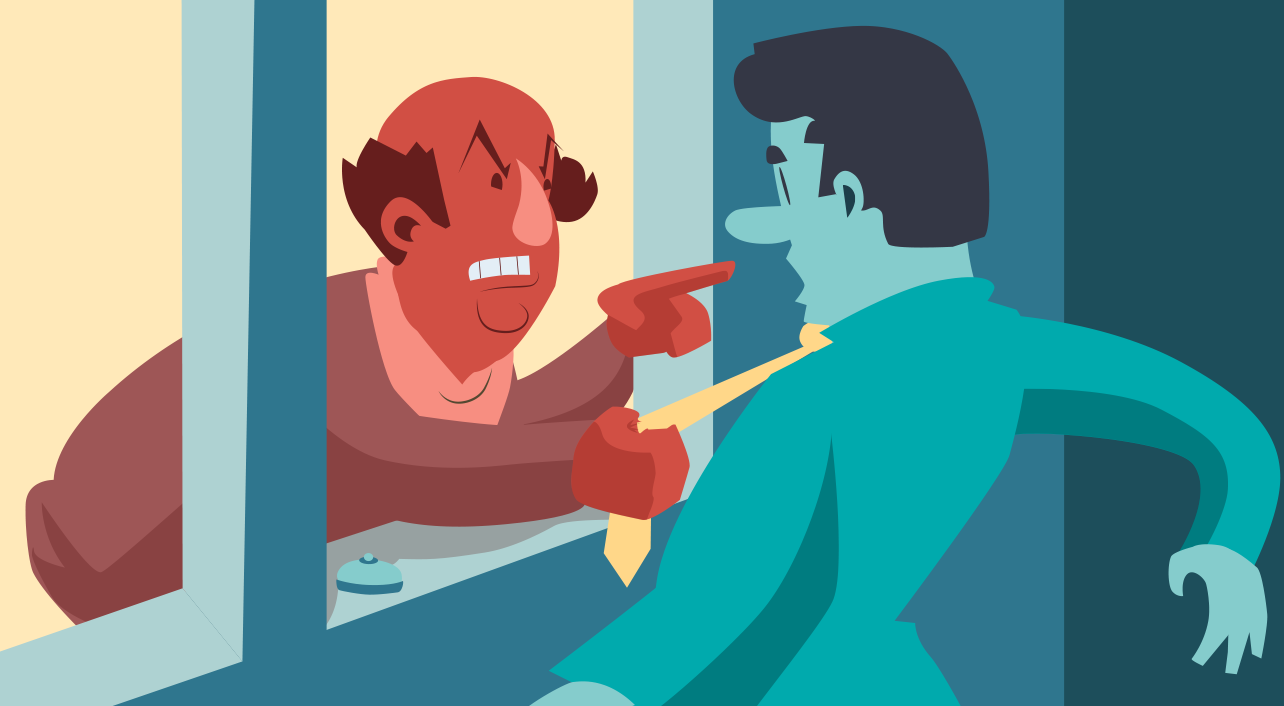- sales
- Blog post
Angry customer? Why that’s actually good news for you
Is it fun to encounter a customer who’s spitting mad about something you sold them, a late delivery, or an after-sales service failure? No. Can it be a good thing for you and your organization? Yes.
To understand this apparent paradox, let’s look at research conducted by professors at two Canadian academic institutions, the School of Business and Economics at Wilfred Laurier University and the Faculty of Management at McGill University.
The researchers surveyed 198 buyers to explore what happens when customers get angry, and found something surprising and potentially very useful for sales and customer service professionals: Customers will let you know they’re angry when they “believe they can potentially alter and/or seek a remedy for a negative event.” The implication of this state of mind is that these customers haven’t given up on you. They still believe you can help them, and they want you to.
And above all, they want to hear that you’re taking responsibility for fixing the problem.
What not to do
Unfortunately, the same researchers found that even experienced sales professionals often fail to get this message across. They become angry themselves. Or defensive. They try to turn down the heat with soothing words. Or hide behind a bureaucratic response: “Well, that’s our policy.”
Why? Because anger feels like an attack. And even when our rational minds know better, we respond with a fight-or-flight response. We believe that we must either defend ourselves or run for cover. But of course, neither response gets the customer what they want: a solution.
So to manage a customer’s hostility effectively, you first must manage your own emotional response. And then you must demonstrate that you can help them.
The three R’s
Here’s an easy-to-remember approach you can use: the three R’s for dealing with an angry customer.
- The first R: REFRAME the customer’s anger. Whenever you encounter an angry customer, remind yourself: “This is not an attack. This is a request for help.”
- The second R: REASSURE the buyer. The number-one message you must communicate is “I am the person who can help you.”
- And finally, take RESPONSIBILITY to make sure the problem gets fixed. Words alone aren’t enough to rebuild trust with angry buyers. They need to see action.
Putting it into practice
Let’s see how this method would work with, say, a customer who calls in sputtering mad because the software package you sold him keeps spitting out error messages. His people are up in arms. He raises his voice: “Your stupid software is broken again. Why hasn’t this been fixed yet?”
This feels like an attack, and your first reaction will be flight or fight. Instead, reframe what you’re hearing. He doesn’t really want a fight. He wants a solution. Sure, he’s frustrated. But if he didn’t want and expect your help, he wouldn’t be talking to you at all.
Next, reassure the customer. You could say, “I’m so sorry to hear that. I know we’ve tried to resolve these problems a couple of times already, so you must be frustrated. I want you to know that I” – and note that it’s “I” and not “we” – “am going to do whatever it takes to get it fixed for good this time.”
Finally, take responsibility. You might say: “Here’s what I’m going to do. I’m putting our top engineer on this immediately, and I will personally monitor the project until we get all these issues resolved to your satisfaction. I’ll call you back within the hour. Would that be okay?”
Of course, there’s no 100% guarantee that this approach will work with every upset customer. But using the three R’s method as a tool, you have a very good chance of turning your angry customer into a long-term customer.
This blog entry is adapted from the Rapid Learning module “Angry Customers: The Three R’s for Dealing With Hostility.” If you’re a Rapid Learning customer, you can watch the video here. If you’re not, but would like to see this video (or any of our other programs), request a demo and we’ll get you access.
The blog post and Rapid Learning video module are based on the following scholarly article: Menon, K., Dube, L. (2004). Service provider responses to anxious and angry customers: Different challenges, different payoffs. Journal of Retailing 80(3):229-37.

Get a demo of all our training features
Connect with an expert for a one-on-one demonstration of how BTS Total Access can help develop your team.



